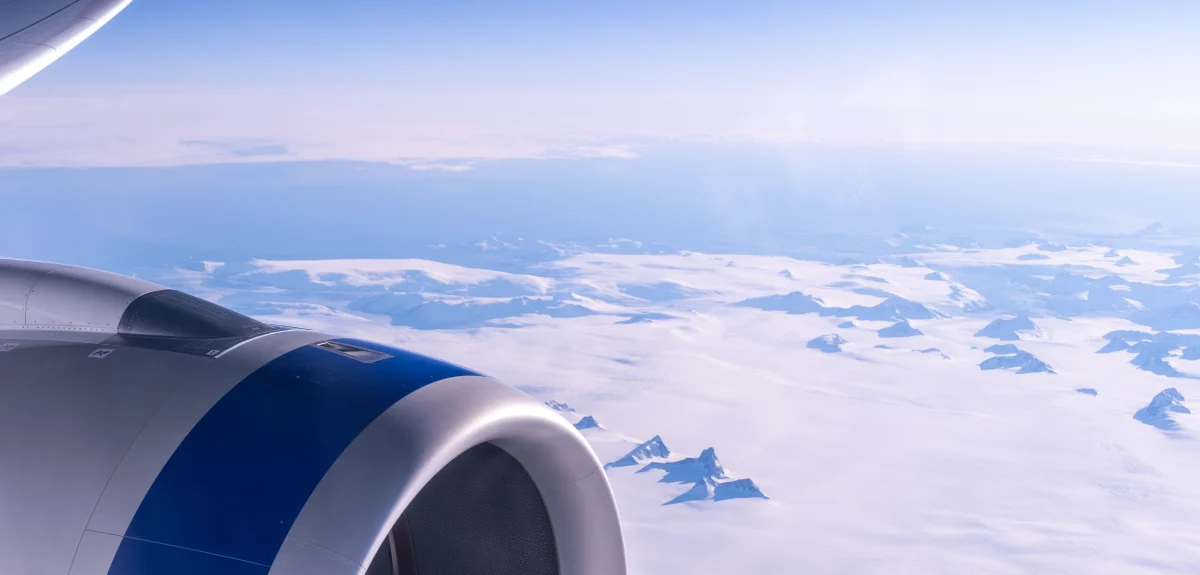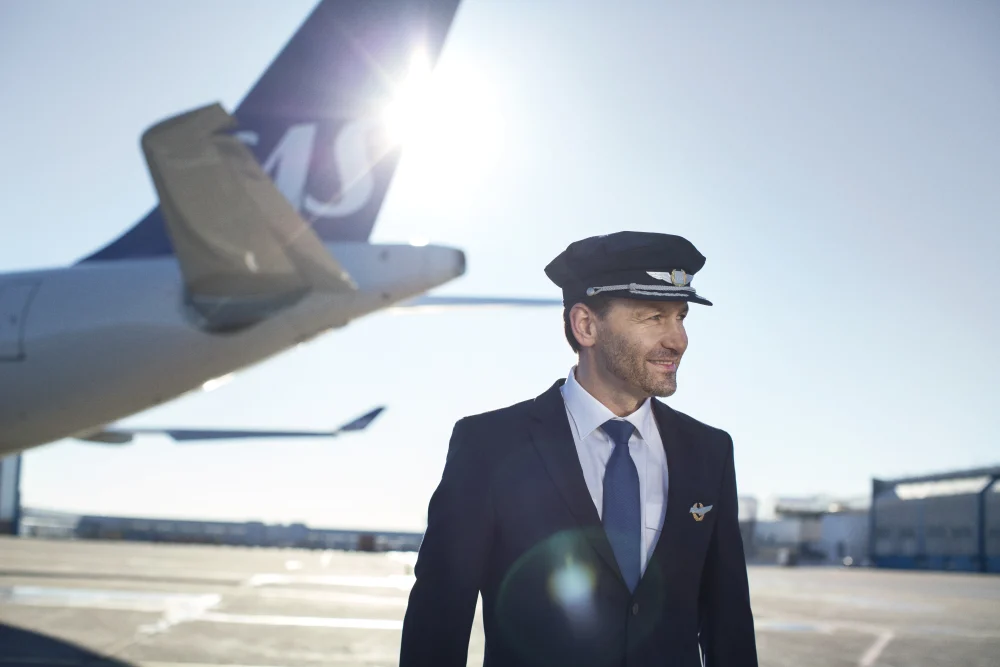
En route to Zero emissions
Ann-Sofie Hörlin, Head of Sustainability at SAS, talks sustainable aviation fuel.
We had a chat with Ann-Sofie Hörlin, Head of Sustainability at SAS, to learn more.
Hi, Ann-Sofie! Tell us more about what you’re working on to help travelers fly fossil-free.
At SAS, we’ve set a goal for all our domestic flights to fly with fossil-free aviation fuel by the year 2030 – an ambition we share with our travelers. Since 2019, it’s been possible to purchase sustainable aviation fuel for your trip. Last year, we launched the SAS Corporate Sustainability Program, where we invite our business customers who are interested in stepping up their purchases of biofuel to join forces with us, and now we’re introducing a new fare that includes 50% biofuel. Our new fares are called SAS Go Smart Bio and SAS Plus Pro Bio, and they’re being launched in spring 2023.
How much less does biofuel generate in CO2 emissions?
The industry typically estimates that biofuel lowers carbon dioxide emissions by an average of up to 80 percent over the course of its life cycle compared to fossil fuel. However, it can often be even more. This means that the biofuel, on its own, doesn’t generate any net increase in atmospheric carbon dioxide.
Currently, under commercial aircraft regulations, biofuel must be blended with fossil fuel, where the share of sustainable biofuel cannot exceed 50 percent of the blend, which is reflected in our new Go Smart Bio and Plus PRO Bio fares.
What does SAF contain?
It’s mainly waste products from agriculture and food production. The existing EU sustainability requirements mean that it cannot be manufactured from an edible biomass or from crops that supplant food production nor can it contribute toward the destruction of the rain forest. This is why, going forward, synthetic SAF will be a hot topic.
What is it?
The synthetic aviation fuel, also known as electrofuel, will be produced by fossil-free electricity, recycled carbon dioxide, and hydrogen.
How does it work?
The fuel is produced with the help of direct air capture, for example, by collecting flue gases from a thermal power station. Then hydrogen is added by means of electrolysis, which creates an alcohol that’s used to produce the biofuel. Naturally, it’s important that the electricity used to produce it is fossil-free, but the process doesn’t require any biomass.
Is SAS participating in any projects?
Yes, we’re currently involved in two projects at the moment: one in Sweden and one in Denmark.
HySkies is a collaboration with Vattenfall, SAS, Shell, and LanzaTech that has its sights set on fossil-free aviation.
Together, in Sweden, we’re exploring the potential of industrial-scale, sustainable SAF production with the help of LanzaJet’s alcohol-to-jet technology, developed by LanzaTech and the US Department of Energy’s Pacific Northwest National Laboratory (PNNL).
Once full production is underway, it will be able to supply SAS with up to 25 percent of our total demand for sustainable aviation fuel by 2030.
The other one is Green Fuels for Denmark, which is operated by Ørsted, and where SAS is participating as a partner. The project is designed to produce electrofuel for aviation solely by means of wind power.
The production facility is expected to make its first delivery of synthetic aviation fuel in 2025 and up to 250,000 tonnes by 2030, which is equivalent to the fuel consumed by every SAS plane that takes off from Copenhagen.
Aircraft can be refueled with a maximum of 50 percent SAF. I think many people wonder why they can’t be refueled just with sustainable fuel?
The SAF has the same properties as fossil aviation fuel and can therefore be blended without any problems. Already today, we’ve completed test flights solely with SAF in our tanks, so it is possible. The current regulations will be modified, and there will gradually be more admixture as testing and certification are completed.
Can you briefly mention any other initiatives you’re carrying out to reach the zero-emissions goal by 2050?
The largest investments we’ve made have been in modernizing our aircraft fleet. Around 60 percent have already been replaced, and just by doing that, we lower emissions by 20–30 percent compared to the earlier models. Thanks to our investments, we have the most modern fleet in Europe.
At the same time, a number of different innovation projects are underway, and it’s important for SAS to be on the cutting edge and lend our support wherever we can. An example of this are the electric and hydrogen aircraft, where we’re partnering both with Airbus and the Swedish company Heart Aerospace.

En route to zero emissions
In a place with spectacular but challenging terrain, aviation is of critical importance to Scandinavia. It provides opportunities for people to live a better life and allows products to be transported across the world. Without air traffic, Scandinavia wouldn’t be what it is today.
For decades, SAS has been front and center when it comes to the promotion of sustainable air traffic, and this remains our top priority. Our overriding goal is to lower emissions, and we’re working hard to reduce our carbon footprint.
We play a meaningful role in the transformation of the aviation industry. This calls for us to support innovation and cooperation to enable the discovery of new solutions, to make significant investments in newer and more fuel-efficient aircraft, to step up the production and usage of sustainable aviation fuel, and to implement numerous other improvements to our products and services on board.
Read more about our sustainability initiatives here.
Text by Johan Lindberg